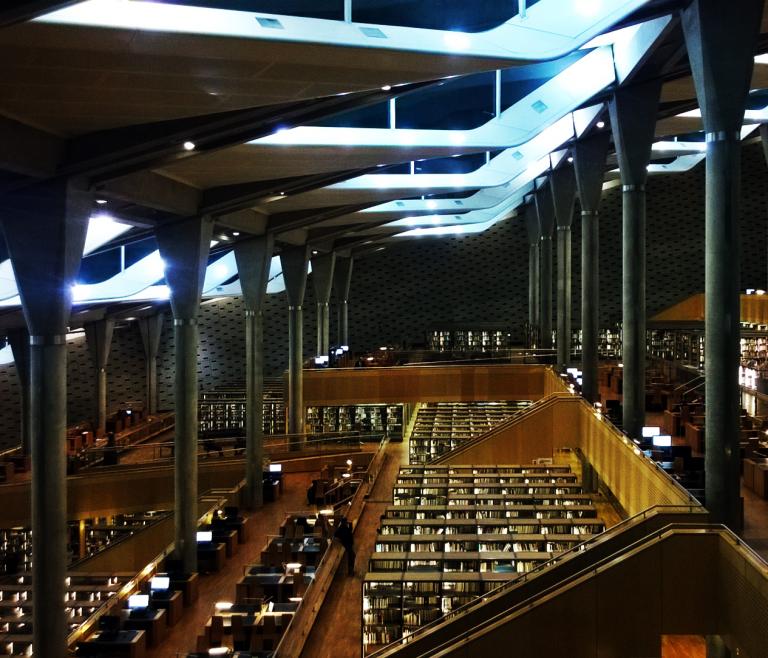https://www.patheos.com/blogs/danpeterson/2018/12/the-biblioteca-alexandrina.html
The Biblioteca Alexandrina

(Wikimedia Commons public domain image)
One of the most illustrious institutions of antiquity was the Great Library of Alexandria, which, in turn, was part of a larger research institution — something like a university — called the Mouseion. (It took its name from the nine Muses, the goddesses of arts and letters and music, to whom it was dedicated. At its height, it may have held as many as 400,000 scrolls, which would perhaps be equivalent to about 100,000 modern books — a remarkable number for an era when far fewer "books" had been written.

(Wikimedia Commons public domain image)
During the third and second centuries before Christ, many leading scholars worked in it, including such figures as Eratosthenes of Cyrene, who produced a strikingly accurate estimate of the circumference of the earth; the author of the first library catalog; Apollonius of Rhodes, who composed the epic poem Argonautica (think of Jason and the Argonauts); the first person to divide poetry into lines; and Aristarchus of Samothrace, who produced the definitive ancient edition of Homer's Iliad and Odyssey and other works. The great geometer Euclid, author of the Elements (which served as the standard summary of geometry for roughly two thousand years), may also have worked and taught at the Library

Legends have circulated for generations blaming specific people — for example, 'Umar, the second Islamic caliph — for destroying the Library. 'Umar is supposed to have declared that, if the texts in the Library agreed with the Qur'an, they were redundant, and, if they disagreed, they were false. In either case, he is said to have announced, they should be destroyed. So he ordered the Library burned.

The tale is completely without historical basis.
But the ancient Library is gone, in any event. It was already gone long before the Arabs arrived. Probably as the result of neglect, economic decline, various civil wars, and fire. And with it went most of the works of science, literature, philosophy, and medicine of the ancient classical world.

(Wikimedia CC public domain photo)
So a high point of today, for me, was to pay my first visit to the modern Biblioteca Alexandrina. I'm a bit overdue, since the Biblioteca was opened in 2002, but it was very impressive.
With 2.5 million volumes — though it has space for between three and four times that number — it's the largest library in Egypt. But it's also an archaeological and art museum, and we enjoyed three specific temporary exhibits, including one on the life of the late Egyptian president Anwar al-Sadat that left me, at least, feeling deeply nostalgic. (We were living in Egypt while he was president and when he was assassinated. I viewed him then and I view him now as a very great man.)
Posted from Alexandria, Egypt
-- Sent from my Linux system.
No comments:
Post a Comment